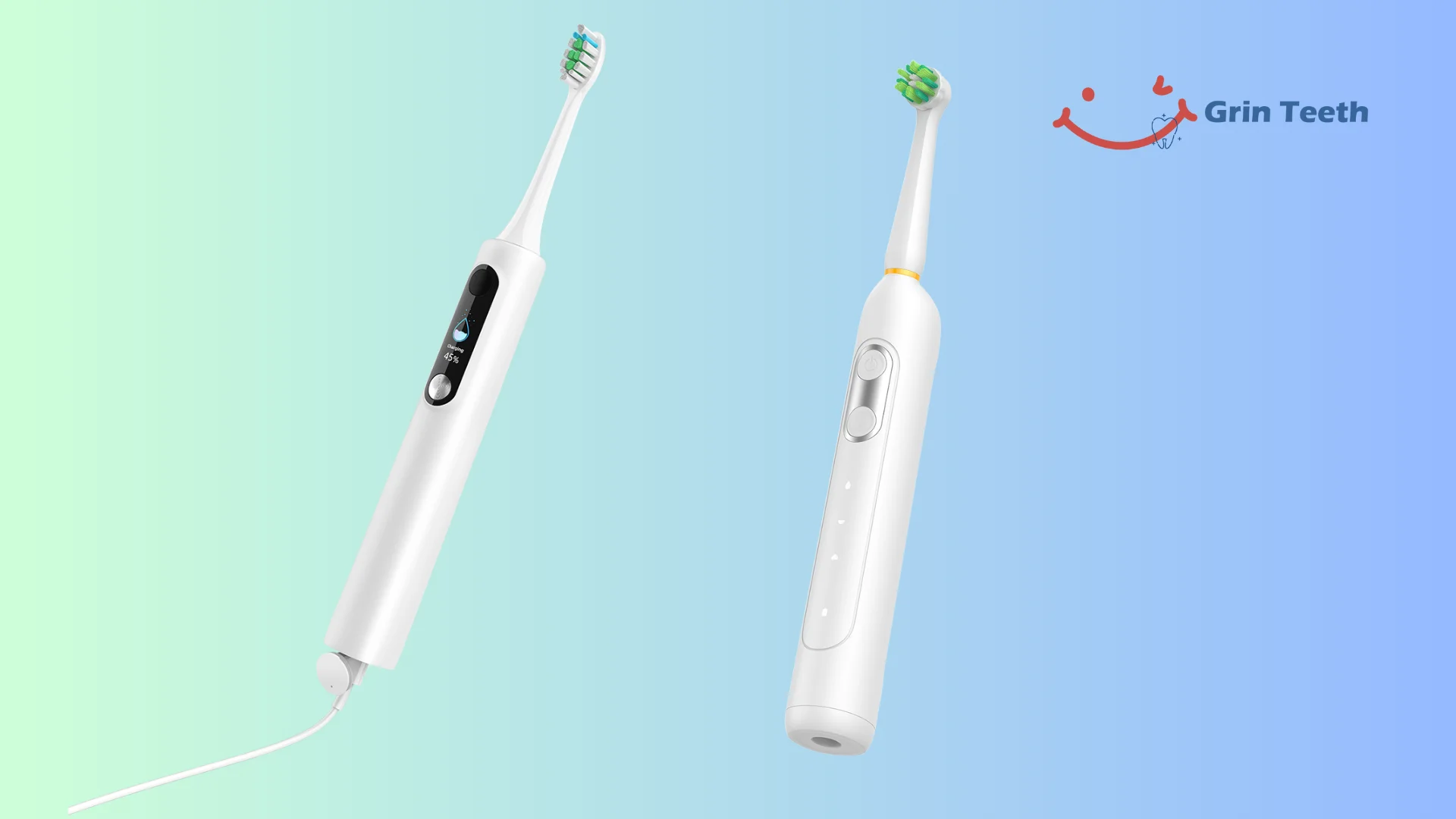When choosing an electric toothbrush, one question frequently arises: Should I go with a sonic or oscillating brush? Both are proven to improve oral hygiene, yet they work in very different ways. One vibrates rapidly to create fluid dynamics; the other scrubs with a rotating head.
This guide breaks down the sonic vs oscillating toothbrush comparison in plain terms—explaining how each works, who benefits most, and what clinical data says. By the end, you’ll know which tool aligns best with your lifestyle, comfort, and cleaning goals.
Still deciding between manual and electric toothbrushes? Read our full comparison here.
Understanding the Two Technologies
Electric toothbrushes fall into two primary categories: sonic and oscillating. Their names refer to how the brush heads move.
Sonic toothbrushes generate high-frequency side-to-side vibrations—typically 15,000 to 40,000 strokes per minute. These brushes clean teeth not only by direct contact but also by creating fluid agitation that reaches slightly beyond the bristles. This makes them particularly effective along the gumline and between tightly spaced teeth.
The science behind sonic brushes lies in fluid dynamics. Vibrations create agitation in toothpaste and saliva, which disrupts bacterial colonies even beyond where bristles physically reach. Some models claim to influence cleaning up to 2–3 mm past the bristle tip, helping flush out plaque from hard-to-reach spaces.
Oscillating toothbrushes, on the other hand, feature small, round heads that rotate back and forth in short arcs—usually around 7,600 to 8,800 rotations per minute. Some models combine pulsation with rotation to break up plaque more aggressively. The mechanical motion focuses on scrubbing one tooth at a time.
In summary, sonic brushes tend to feel smoother and clean broader areas in less time, while oscillating brushes offer a more targeted, physical scrubbing experience.
Key Differences That Affect Your Daily Routine
| Feature | Sonic Toothbrush | Oscillating Toothbrush |
|---|---|---|
| Motion Style | Side-to-side vibration | Circular rotation (oscillates) |
| Cleaning Method | Disrupts plaque with motion + fluid flow | Physically scrubs each tooth surface |
| Head Shape | Oval and elongated | Round and compact |
| Noise Level | Quieter | Louder |
| Sensation | Gentle, smooth | Scrubbing, targeted |
| Best For | Sensitive gums, tight areas | Visible plaque, front-tooth cleaning |
Technique Adaptation
Sonic brushes work best when gently glided along the gumline with minimal pressure. Their elongated head lets users clean multiple teeth in a sweeping motion. Oscillating brushes, by contrast, require the user to hold the brush on each tooth for a second or two to allow the rotating bristles to do their job. This method mimics a “manual polishing” process and may be easier for those used to scrubbing.
Effectiveness in Common Problem Zones
Oscillating heads can be highly effective for anterior teeth and visibly stained surfaces. Their circular motion is ideal for polishing the front-facing surfaces. Sonic brushes excel at reaching posterior molars and gumline regions, particularly for users with crowded or overlapping teeth.
For example, someone with tight molar contacts might find an oscillating brush easier to maneuver between those areas. In contrast, a sonic brush’s fluid motion may better serve someone prone to gingivitis near the gum margins.
Ultimately, the best brush is the one that matches your brushing habits and compensates for your technique gaps.
Sonic vs Oscillating Toothbrush – Which One Fits Your Lifestyle?
For Sensitive Gums or Braces
If your gums bleed easily or you wear orthodontic appliances, a sonic brush is often the safer choice. Its high-frequency, low-pressure movement is less likely to cause irritation. Some models include pressure sensors or extra-soft brush heads designed specifically for sensitive users.
Example: Sarah, 32, wears ceramic braces and switched from a manual brush to a sonic model. She reported reduced gum bleeding within one week and found it easier to clean around brackets without poking wires.
👉 Grin Teeth ET 1A Sonic Toothbrush uses high-frequency vibrations and soft bristles to gently clean along the gumline and around orthodontic appliances, making it ideal for people with sensitive gums or undergoing orthodontic treatment.
For Coffee, Tea, or Tobacco Stains
If you’re a heavy coffee or tea drinker—or a smoker—oscillating brushes may offer a more visibly satisfying clean. Their mechanical rotation excels at removing surface stains and polishing enamel.
Example: Tom, 45, drinks espresso twice daily and noticed stubborn stains on his lower front teeth. A switch to an oscillating toothbrush gave him noticeably whiter results within a month.
👉 Grin Teeth ET 2A Oscillating Toothbrush uses circular motion and targeted bristle contact to restore brightness.
For Kids, Seniors, or Limited Dexterity
Sonic brushes often require less effort and broader sweeping motions, making them ideal for seniors or users with arthritis. Oscillating brushes, with their smaller heads and “tooth-by-tooth” approach, may be easier for children who need visual guidance and tactile feedback.
For Budget-Conscious or Tech-Savvy Users
Sonic toothbrushes dominate the premium segment and often come with Bluetooth tracking, brushing goals, and habit analytics. However, affordable oscillating brushes under $30 still offer solid performance and reliability.
If You Switch Between Styles
Some households keep both types—for example, using a sonic brush in the morning for speed and a more focused oscillating model at night. There’s no harm in alternating if both tools are effective for your routine.
In short, tailor your brush to your lifestyle, not just your teeth.
Clinical Findings – What Does Science Say?
Electric toothbrushes, regardless of type, outperform manual ones in reducing plaque and gingivitis. But how do sonic and oscillating styles compare in research?
A study in the Journal of Clinical Periodontology found that users of oscillating brushes had lower bleeding scores and plaque index after 12 weeks compared to sonic users.
A systematic review and meta-analysis concluded oscillating-rotating toothbrushes had a small but significant advantage over sonic ones in plaque and gingival reduction.
A 12-week randomized controlled trial reported that oscillating toothbrushes achieved statistically greater plaque reduction than sonic models.
In orthodontic users, a clinical trial found oscillating brushes more effective in plaque control compared to sonic models.
The American Dental Association (ADA) maintains that both types are safe and effective when used correctly.
One study comparing school-aged children found that compliance improved with sonic brushes that included app reminders and gamification features. Another noted that older adults preferred sonic models due to reduced vibration harshness and quieter operation.
Ultimately, clinical differences exist but are relatively small. What matters more is how consistently and correctly the brush is used.
Real-World Experience – What Users Say
User reviews and online forums reveal a lot about daily use.
Sonic users love the smooth glide and minimal effort. Many report that it feels like a dental cleaning and that they brush longer thanks to the soothing vibrations. A frequent comment is, “It doesn’t feel like I’m brushing, but my teeth are always cleaner.”
Oscillating users often mention a strong “scrubbed” sensation and say their teeth feel polished afterward. Some say it’s louder or more aggressive, but in a good way.
In online reviews, users with smaller mouths or tight teeth favor sonic models for easier reach. Others with heavy staining or front-facing plaque prefer oscillating heads.
Even geography influences preference. European brands often promote oscillating brushes, while U.S. and Asian markets lean heavily toward sonic products.
Above all, personal comfort drives habit formation. Discomfort—whether from brush motion, pressure, or sound—leads to skipped routines.
Tip: Try both types at a dental clinic or with a trial-period brush. You’ll know what feels right.
If you’re still uncertain, comparing a sonic vs oscillating toothbrush based on how it feels in your own mouth is more insightful than relying on marketing promises.
Final Verdict and Actionable Recommendation
| If you… | Go With… |
|---|---|
| Have sensitive gums | Sonic |
| Want that “just polished” feel | Oscillating |
| Use braces or aligners | Sonic |
| Need tech features & apps | Sonic |
| Prefer a firm, manual-clean feel | Oscillating |
If you’re still undecided, test both styles for one week each. Observe how your mouth feels, how easy each brush is to maneuver, and how likely you are to stick with it.
Don’t choose based on features alone. Choose based on the tool that makes brushing more consistent and enjoyable.
Also consider lifestyle: If you travel often, keep a compact oscillating brush in your bag. If you share a brush base with others at home, interchangeable sonic heads may be more hygienic.
The best toothbrush is not the smartest. It’s the one that gets used — twice a day, every day.
Start tonight. Pick the one that works for your habits and stick with it.
Top Picks
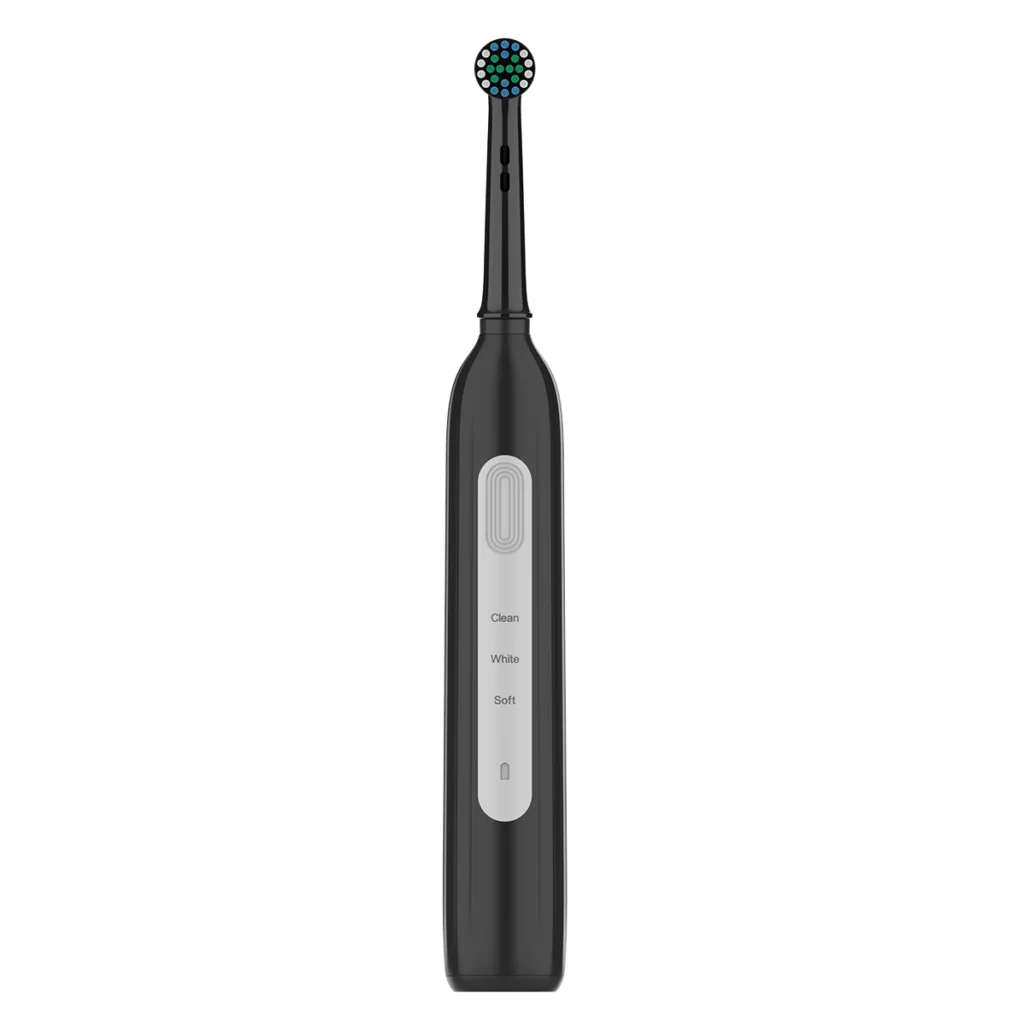
Grin Teeth ET 6C
$47.00

Grin Teeth ET 6B
$47.00
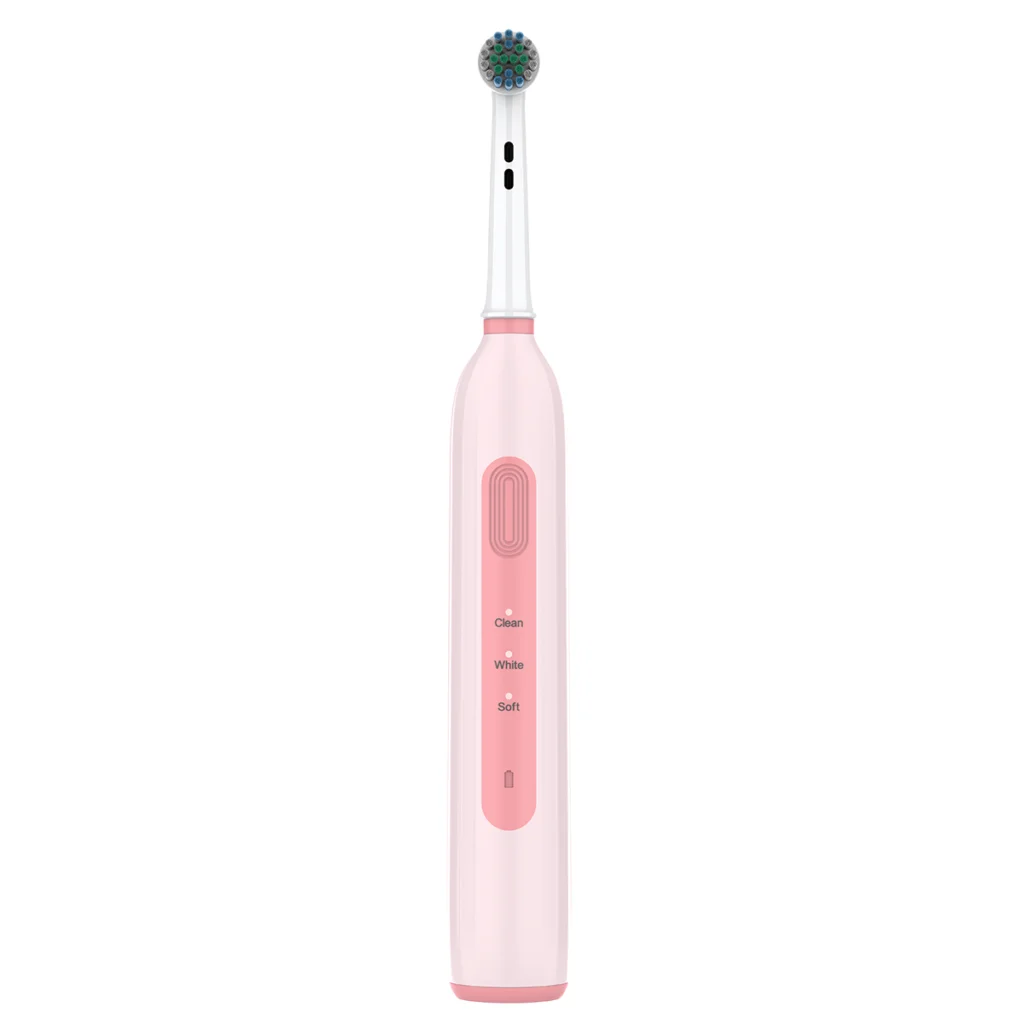
Grin Teeth ET 6A
$47.00
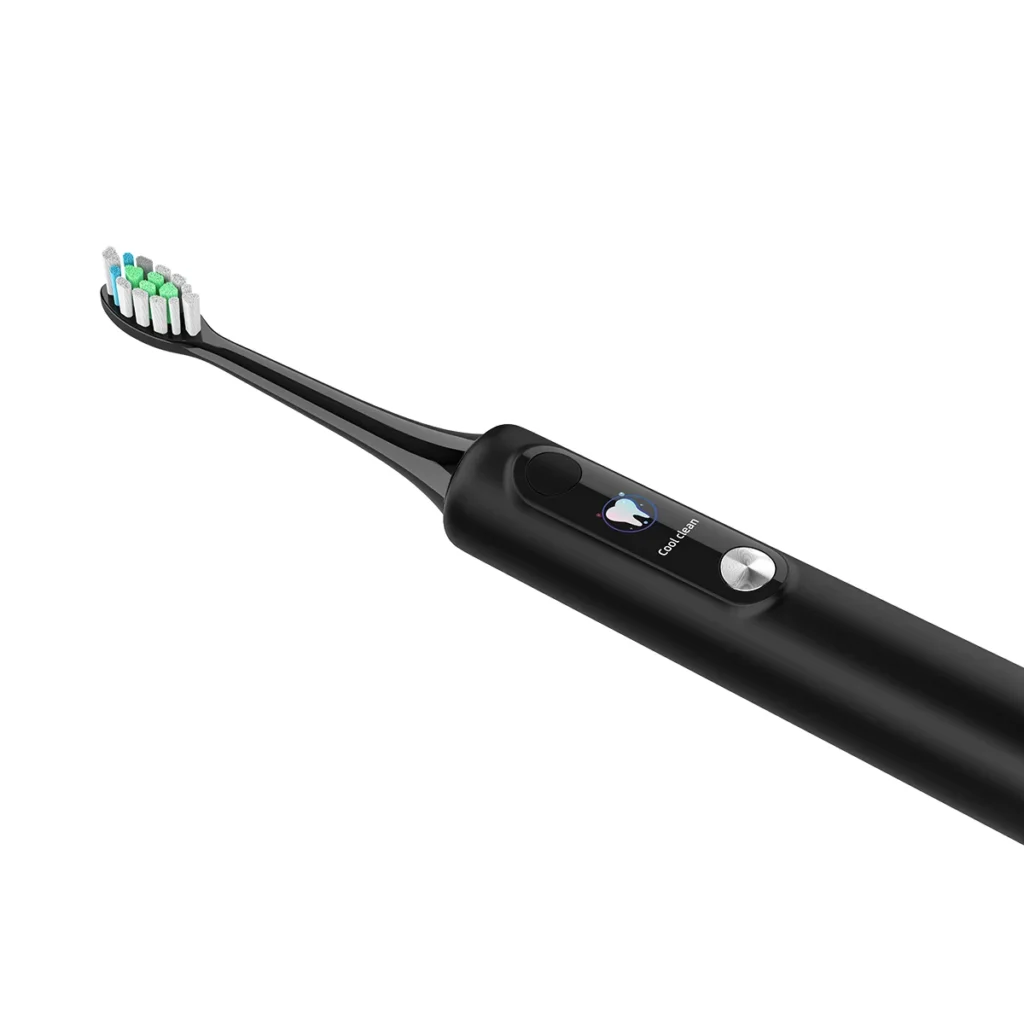
Grin Teeth ET 1B Black
$65.00
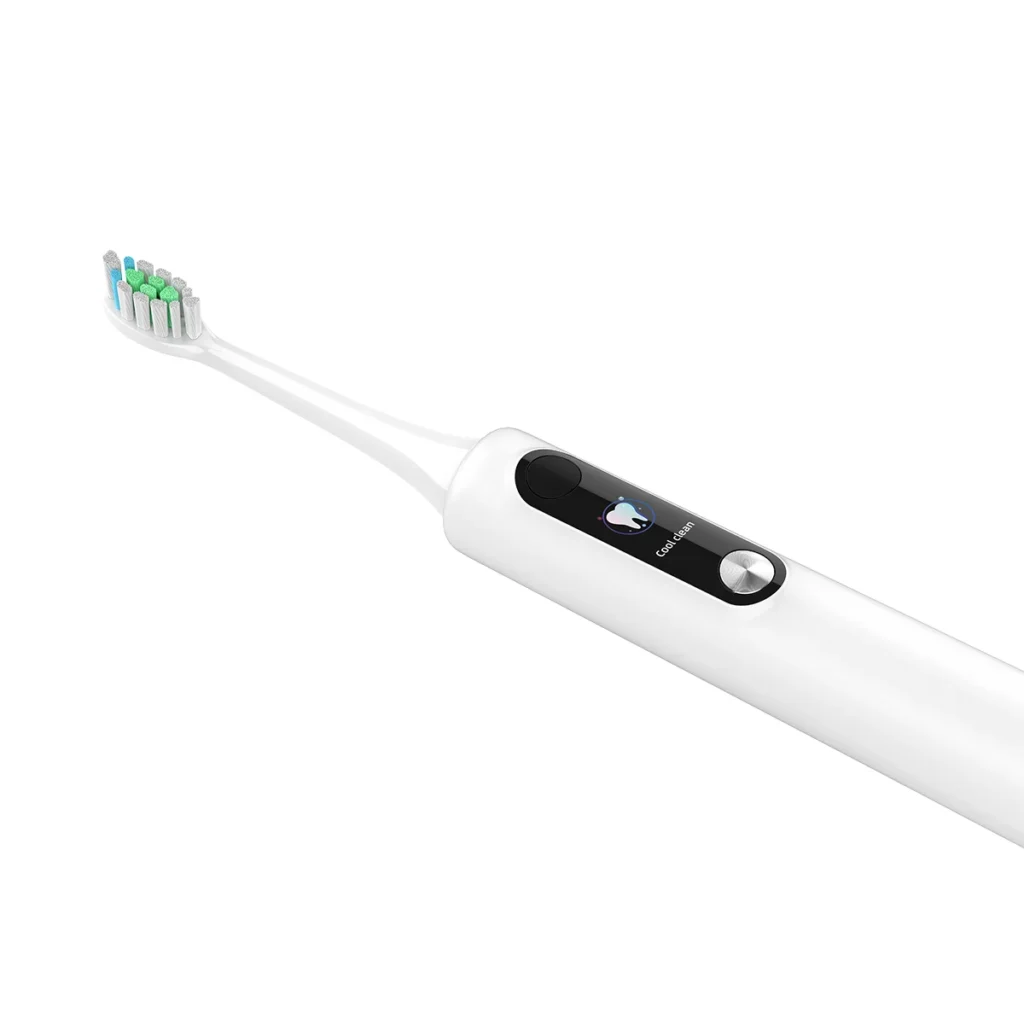
Grin Teeth ET 1A White
$65.00

